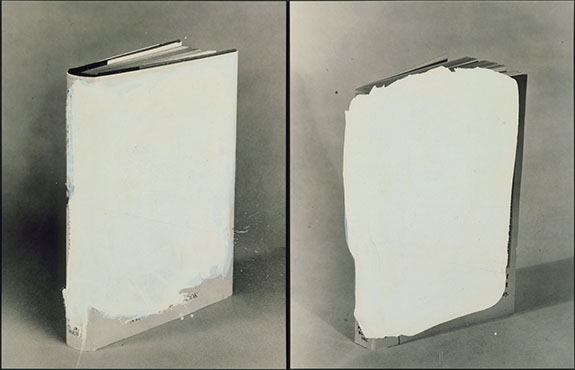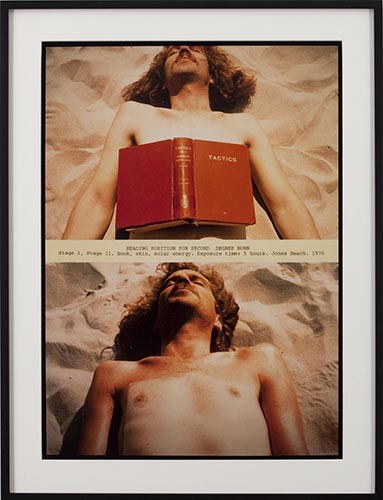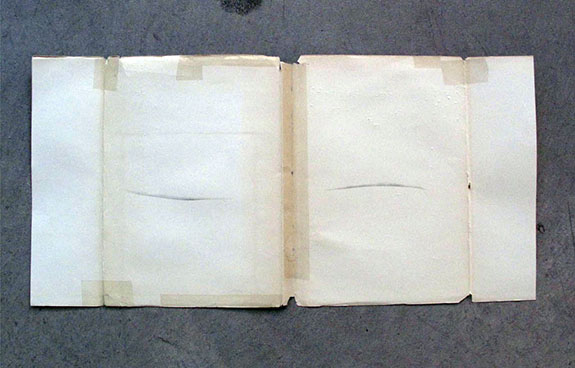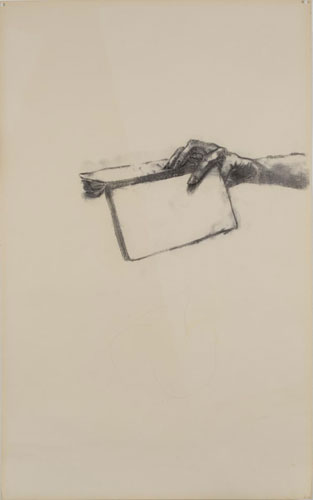 |
 |
Appearing within the context of our now digital, screening and scrolling, mouse- or button- controlled reading experience, CODEX reveals the book as a sign that enables us to leverage the experience of books for different purposes. These signs or images free us from litanies of words, launching us into looking rather than reading. And so we stagger: from wit to dreams to lyrical gesture to the perverse appeal of elusive meaning. Representing the book free of its original form and context, CODEX examines the current state of the book with finely crafted sequencing and an extremely smart scrapbook sensibility.
 |
.jpg) |
French performance artist Jean-Luc Verna presents a large, raw image of an outstretched hand holding an open book face down titled Anatomie artistique de l'homme. A photo-transfer on vintage paper, boosted with pencil, it radiates a theatrical and powerful expression of refusal.
 |
antiquated typeface and the crackly visual quality of early cinema, is clearly an epitaph. It contains only the words of its title: The End (2000-11). Indeed.
Ms Couzens gives us a poetic and tantalizing review of CODEX, a must-see show!
M. Swisher